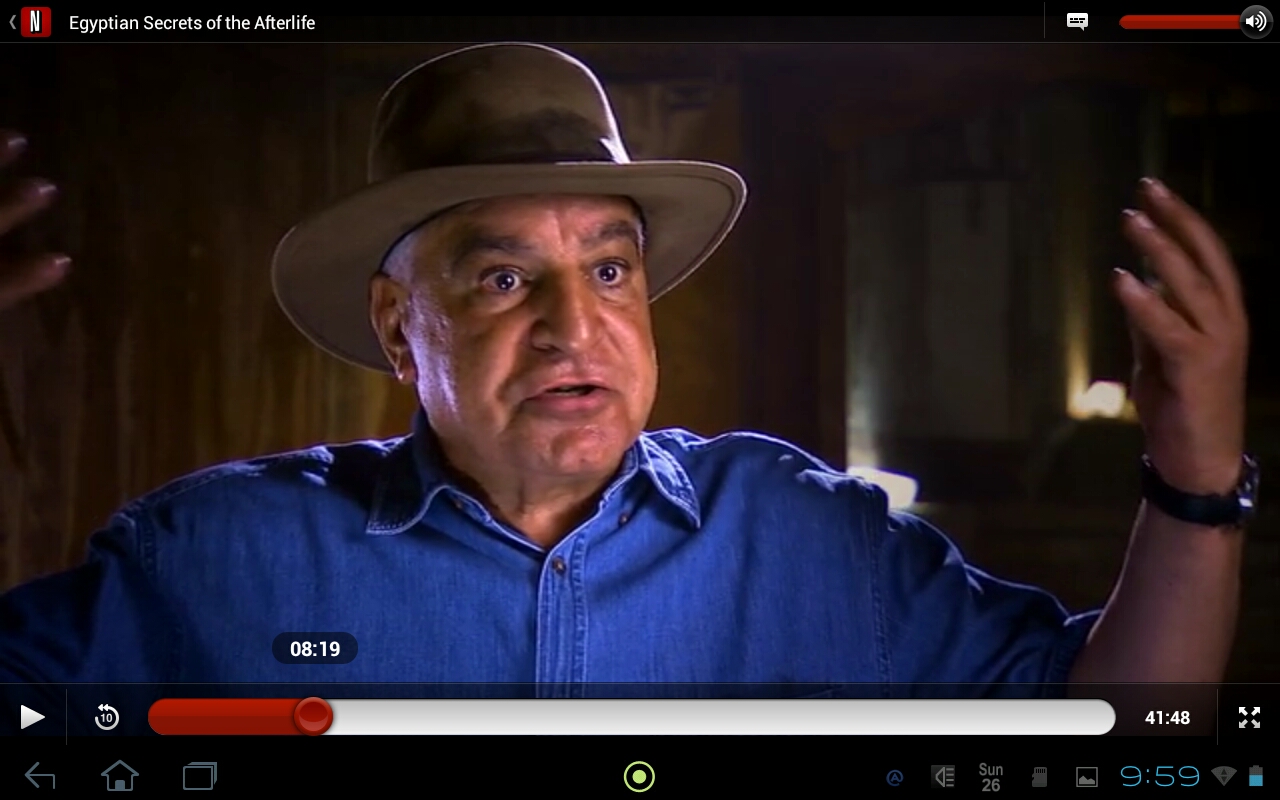HOME
TOPICS
ABOUT ME
Seeing is believing.
Starting our fourth decade: Al Fasoldt's reviews and commentaries, continuously online for 30 years

This image from a National Geographic TV show shows gorgeous color and a sharp video image on Netflix. This was captured from a large Android tablet during a fast-forward operation. The progress bar does not show up in normal full-screen viewing. (This is precisely what was on the screen, with no cropping or resizing.)
How good is the video from Netflix?
June 2, 2013
By Al Fasoldt
Copyright © 2013, Al Fasoldt
Copyright © 2013, The Post-Standard
It used to be that whenever somebody mentioned Netflix, I immediately wondered why anyone would want to watch TV over the Internet. After all, my cable picture now and then looks like it's a transmission from the Mars Orbiter, so TV streamed over the Internet has just plain got to be worse.
But, ahem. As even my blind grandmother used to say, seeing is believing. So when I finally got my own Netflix account and started watching it on my big HDTV, I was stunned. Blown away. Left speechless.
(I explained what Netflix is and how it is starting to replace cable in last week's column. You can read it here: www.technofileonline.com/texts/tec052613.html.)
How does Netflix work this magic? It uses the latest methods of video compression, for one thing. For another, it quickly sizes up your screen capabilities and your Internet speed and delivers an optimized combination of video and audio. Each user's video feed is custom tailored.
As long as you have a halfway fast Internet connection -- through cable or FiOS, for example -- the picture and sound on Netflix will be superb. We've never had a glitch while watching anything. To see if my mid-speed FiOS service had enough speed in reserve, I fired up two separate Netflix movies on two of my tablets while Nancy watched a third Netflix movie on TV. There was no sign of a problem.
Color accuracy was better than what we get with cable, and the audio was impressive. I had just hooked up a fancy-dan TV surround-sound system with a super-sub-subwoofer, with amazing results. It only took a few episodes of "The X Files" to shake all the dirt out of the carpet. (My dentist wants to see me about loose fillings, too.)
Technical quality aside, Netflix can't yet show you first-run movies or most current TV episodes. Both of those limitations are likely to go away once studios realize how many potential viewers are being shut out when Netflix-type streaming can't get permission for those items.
Another problem: Before Netflix or any other streaming service can fully replace cable TV, two other issues need to be solved -- availability of local programming, and, especially, streaming of national and local news. This surely will happen in a year or two. TV and movie distributors will wake up when they hear the sound of credit cards being swiped.
Keep in mind that I didn't check the performance of streaming video services from Hulu, Amazon or other Netflix competitors. Nor have I compared how well the networks stream their own TV shows, a relatively new phenomenon. We'll take a look at that later this summer.